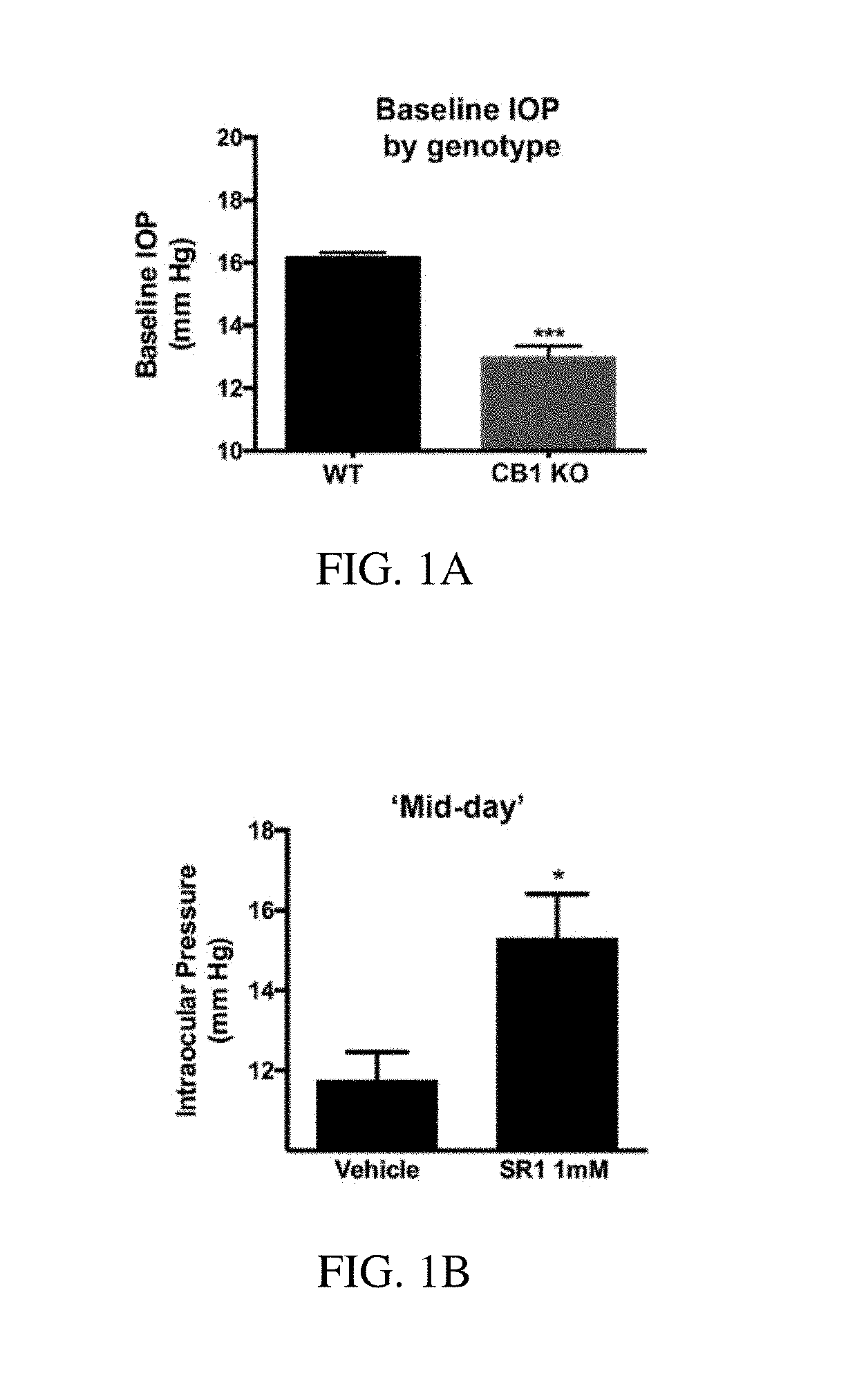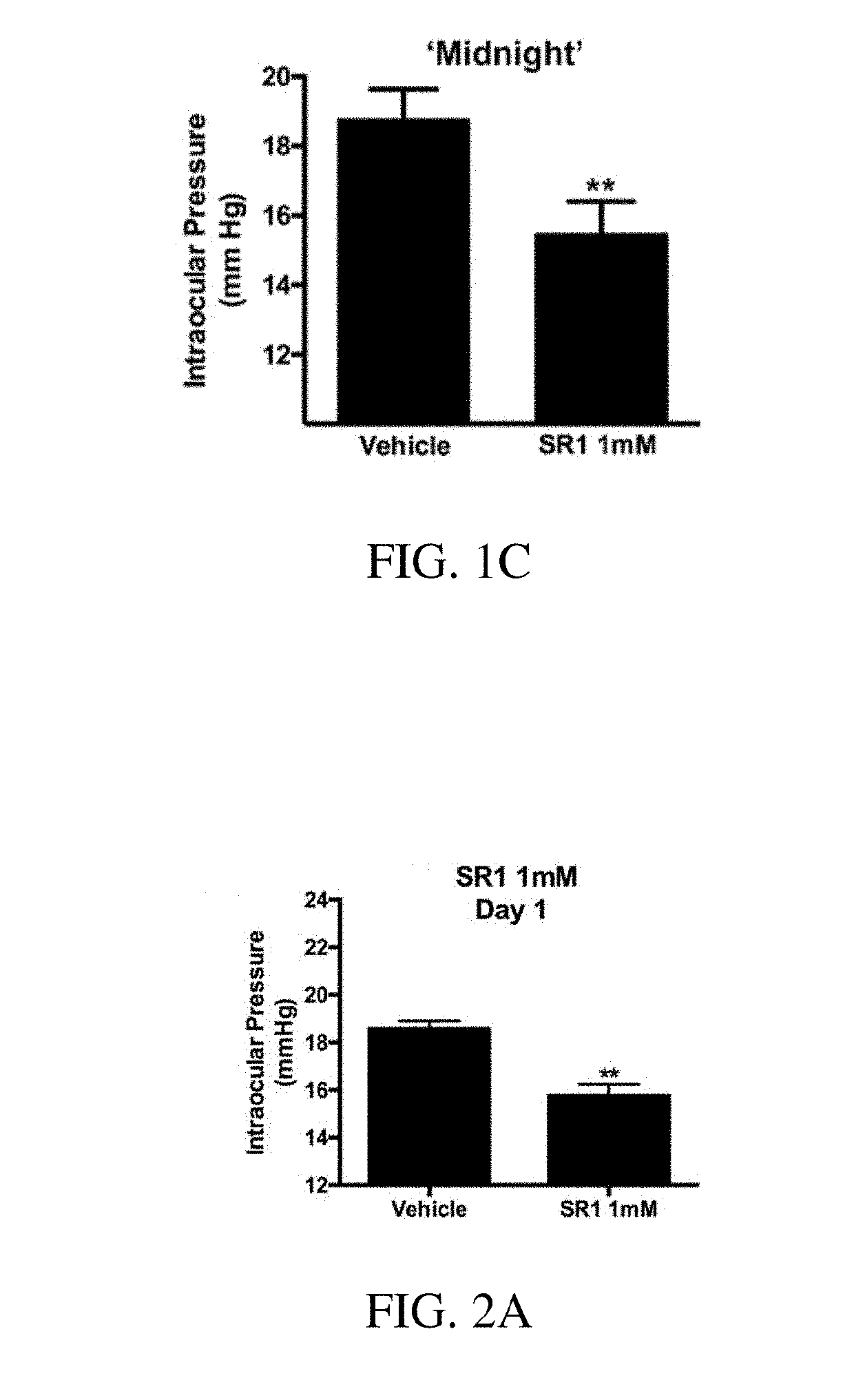Treatment for glaucoma
- Summary
- Abstract
- Description
- Claims
- Application Information
AI Technical Summary
Benefits of technology
Problems solved by technology
Method used
Image
Examples
example 1
[0051]In this Example, intraocular pressure in animals treated with SR141716 was determined.
[0052]Intraocular pressure in CB1 knockout mice were compared to intraocular pressure in wild type mice. As depicted in FIG. 1A, CB1 knockout mice had lower baseline ocular pressures than wild type controls.
[0053]CB1 knockout and wild type mice were maintained in standard light cycle and in reverse light cycle. Mice were administered SR141716 (1 mM) at midday and at midnight. As depicted in FIG. 1B, SR141716 raised intraocular pressure at midday as expected in mice maintained in the standard light cycle. Surprisingly and unexpectedly, however, SR141716 reduced intraocular pressure at midnight in mice maintained in the reverse light cycle.
[0054]As depicted in FIG. 2C, daily treatments with SR141716 resulted in sustained lower ocular pressure. As depicted in FIG. 2A SR141716 lowered pressure on the first day of application but on the 7th day, presumably because the pressures were already lowere...
example 2
[0057]In this Example, intraocular pressure in animals treated with PSNCBAM1 was determined.
[0058]As depicted in FIG. 3A, topical treatment of WT mice with PSNCBAM1 did not lower ocular pressure relative to the contralateral eye but as shown in FIG. 3B, intraperitoneal injection lowered ocular pressure. Moreover, the apparent non-effect of topical treatment may be due to a cross-over effect since pressures in both eyes dropped after treatment despite treatment in only one eye.
[0059]More specifically, when PSNCBAM1 was administered topically, it was found to be without effect (FIG. 3A, vehicle-treated eye (mm Hg±SEM): 17.4±0.7, PSNCBAM1 (5 mM): 18.0±0.6, n=8, not significant by paired t-test). To rule out the possibility of a false-negative due to poor corneal penetration for PSNCBAM1, IOP was also tested after injection with the compound finding that this yielded a significant drop in IOP (FIG. 3B, baseline IOP (mm Hg±SEM): 19.6±0.4; 1 hour after PSNCBAM1 (4 mg / kg IP): 17.3±0.5; n=1...
PUM
| Property | Measurement | Unit |
|---|---|---|
| Molar density | aaaaa | aaaaa |
| Molar density | aaaaa | aaaaa |
| Pressure | aaaaa | aaaaa |
Abstract
Description
Claims
Application Information
 Login to View More
Login to View More - R&D
- Intellectual Property
- Life Sciences
- Materials
- Tech Scout
- Unparalleled Data Quality
- Higher Quality Content
- 60% Fewer Hallucinations
Browse by: Latest US Patents, China's latest patents, Technical Efficacy Thesaurus, Application Domain, Technology Topic, Popular Technical Reports.
© 2025 PatSnap. All rights reserved.Legal|Privacy policy|Modern Slavery Act Transparency Statement|Sitemap|About US| Contact US: help@patsnap.com



